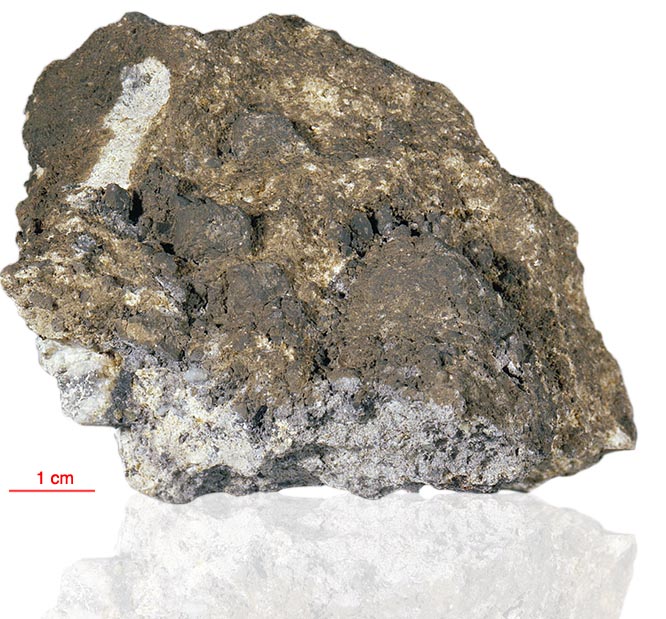
Fact sheet
76255 is a banded impact melt breccia with a large clast of crushed norite and several small white clasts. The matrix of 76255 is both fine-grained and clast-laden. The texture of the matrix is sub-ophitic with pyroxene and olivine oikocrysts, small spherical vesicles, and abundant mineral and lithic clasts. However, the matrix is variable with finer-grained, dark material intermixed with coarser-grained light material. The plagioclase inclusions in the breccia matrix are very calcic. Rotation 1 shows a clast-laden area containing a pyroxene crystal with exceptional exsolution features. Rotation 2 focuses on an olivine-rich region within a large anorthositic clast.
The sample weighed 406.6 grams before analysis and has been dated at 4.02±0.04 billion years (Ar/Ar).
Further details of this and other Apollo samples are here: http://curator.jsc.nasa.gov/lunar/
Our thin section has been coated for analysis and some of this coat remains in fractures within the sample (visible in reflected light)
Apollo 17, the final manned landing mission, had two objectives: to obtain samples of ancient rocks from the lunar highlands and to look for evidence of younger volcanic activity on the valley floor.
This small Collection contains material deriving from both periods, including igneous rocks around 4.3 billion years old from the lunar highlands as well as younger volcanic samples dating from about 3.6 billion years ago.
Apollo 17 was launched on 7 December 1972.






